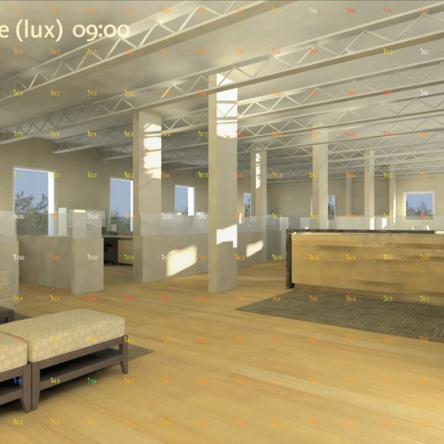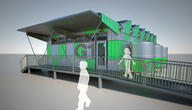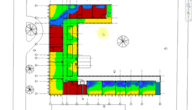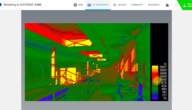You are here
Lighting and Daylighting Design
Getting smart about lighting is an important step to designing energy efficient buildings. Learn how to use daylighting, efficient lights, and good controls to both reduce energy demands and make people happier and more productive.
The sun is predictable and daylight can be a very reliable source of light. Sunlight, views, and daylight are different though, and need to be carefully managed.
Daylighting, or using sunlight to illuminate your building, is an effective way to both decrease your building’s energy use and make the interior environment more comfortable for people.
In commercial buildings, electric lighting accounts for 35 - 50% of total electrical energy consumption. Strategic use of daylight can reduce this energy demand. Daylight also improves people's comfort and productivity.
Even when you can’t use daylighting, good lighting design can reduce energy use significantly. Both are important in Net Zero Energy Buildings.
| Attachment | Size |
|---|---|
| 317.33 KB | |
| 7.33 MB | |
| 13.36 MB |
Tags:
Dive Deeper
Fundamentals of Light
Visual comfort is measured by illumination levels and distribution. This includes not only the brightness of light sources, but also the colors in the light, and how well light is spread around spaces. The goal is to illuminate tasks without using too much energy or causing glare. Good lighting design achieves visual comfort by modeling and simulating daylight and artificial light.Daylighting
Using daylight in your building is a key strategy for passive design. Letting sun into your building impacts visual comfort, as well as thermal comfort. Learn design strategies to help you use daylight to meet as much of your lighting needs as possible.Views
Views are the ability for building occupants to see landscape, objects, and people outside the building. For many occupants, this is a major factor in their enjoyment of the site and visual comfort.Links and References
- A reference page by Gregg Ander
- From the US Department of Energy
- Research from the California Energy Commissions's Public Interest Energy Research program
Comments





